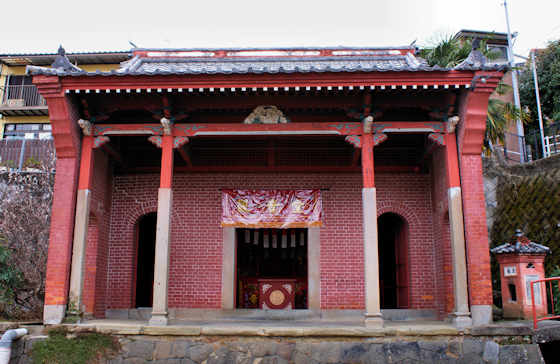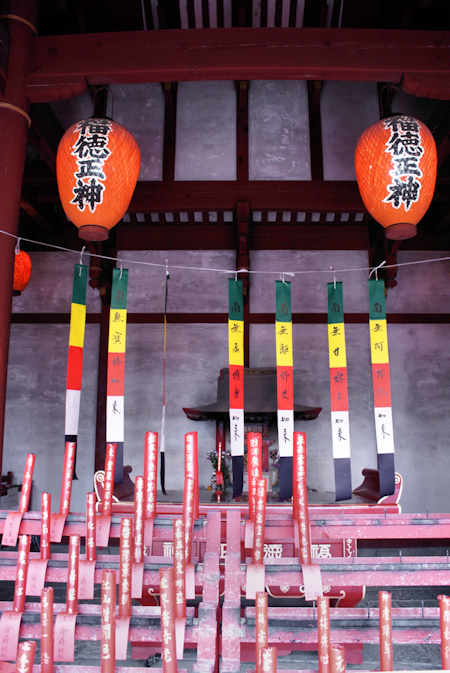Showing posts with label tojin yashiki. Show all posts
Showing posts with label tojin yashiki. Show all posts
Thursday, August 24, 2023
Fukken Hall Tenkodo Shrine
Labels:
kyushu108,
mazu,
nagasaki,
tojin yashiki
Tuesday, August 22, 2023
Kannondo Shrine Tojin Yashiki
Guanyin also became a popular deity among various branches of Chinese folk religions. Enshrined alongside Guanyin here is also Guanyu, a popular deity associated with business prosperity and also enshrined in the nearby Tenkodo Shrine.
Labels:
kannon,
kyushu108,
nagasaki,
tojin yashiki
Wednesday, August 16, 2023
Tenkodo Shrine Tojin Yashiki
The shrine, along with the many of the other buildings, burned down in the great fire of 1784 and was rebuilt in 1790. The current building dates to 1906.
When the Chinese ships left China they carried a statue of the goddess Mazu, and when arriving in Nagasaki the statue would be brought into the Tenko-do, a ritual recreated each year during Nagasaki's Lantern Festival.
Monday, August 14, 2023
Dojindo Shrine Tojin Yashiki
The previous post was on the Chinatown just below Tojin Yashiki.
Saturday, August 12, 2023
Nagasaki Shinchi the Oldest Chinatown in Japan
Labels:
chinatown,
kyushu108,
Matsuri,
nagasaki,
tojin yashiki
Subscribe to:
Posts (Atom)















































